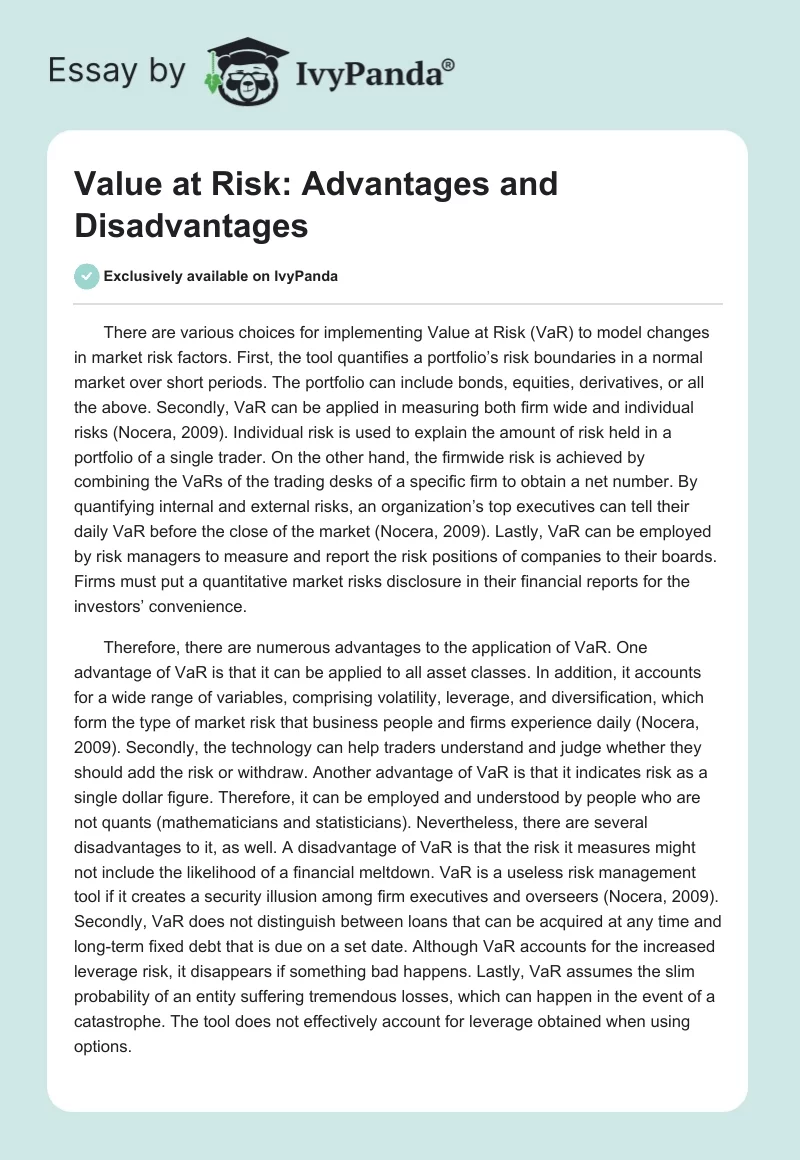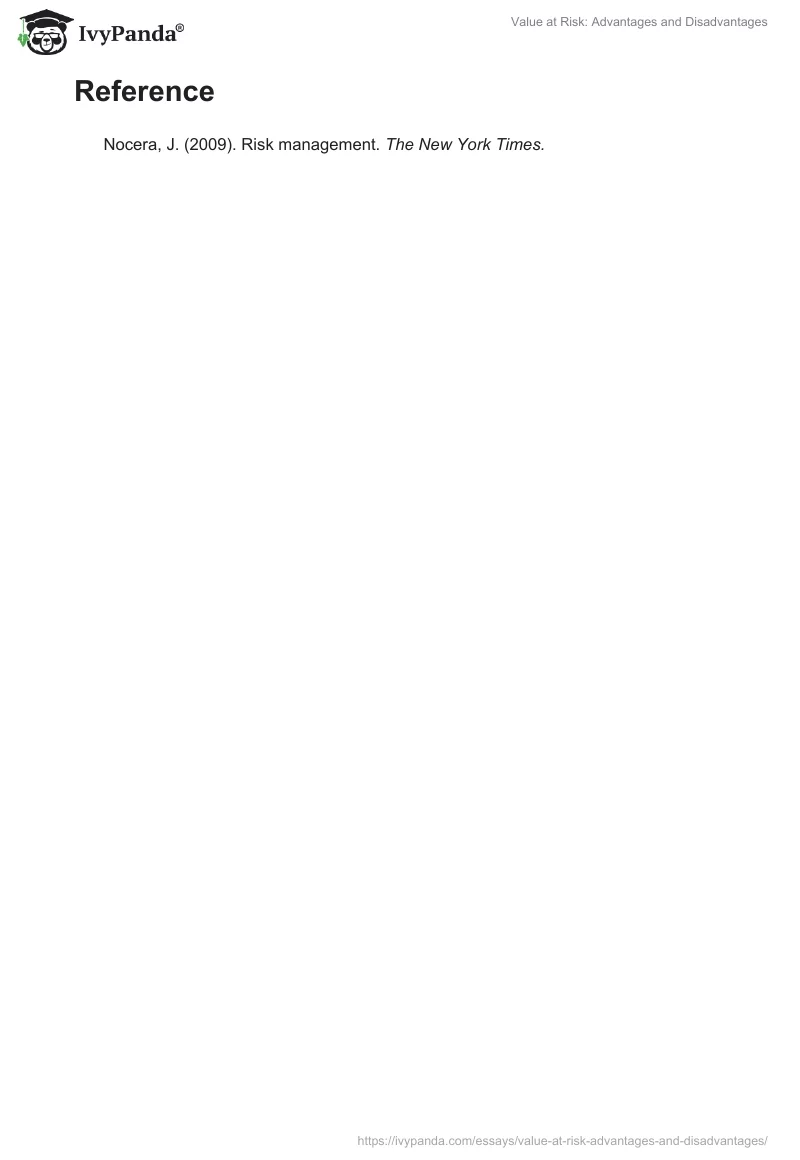There are various choices for implementing Value at Risk (VaR) to model changes in market risk factors. First, the tool quantifies a portfolio’s risk boundaries in a normal market over short periods. The portfolio can include bonds, equities, derivatives, or all the above. Secondly, VaR can be applied in measuring both firm wide and individual risks (Nocera, 2009). Individual risk is used to explain the amount of risk held in a portfolio of a single trader. On the other hand, the firmwide risk is achieved by combining the VaRs of the trading desks of a specific firm to obtain a net number. By quantifying internal and external risks, an organization’s top executives can tell their daily VaR before the close of the market (Nocera, 2009). Lastly, VaR can be employed by risk managers to measure and report the risk positions of companies to their boards. Firms must put a quantitative market risks disclosure in their financial reports for the investors’ convenience.
Therefore, there are numerous advantages to the application of VaR. One advantage of VaR is that it can be applied to all asset classes. In addition, it accounts for a wide range of variables, comprising volatility, leverage, and diversification, which form the type of market risk that business people and firms experience daily (Nocera, 2009). Secondly, the technology can help traders understand and judge whether they should add the risk or withdraw. Another advantage of VaR is that it indicates risk as a single dollar figure. Therefore, it can be employed and understood by people who are not quants (mathematicians and statisticians). Nevertheless, there are several disadvantages to it, as well. A disadvantage of VaR is that the risk it measures might not include the likelihood of a financial meltdown. VaR is a useless risk management tool if it creates a security illusion among firm executives and overseers (Nocera, 2009). Secondly, VaR does not distinguish between loans that can be acquired at any time and long-term fixed debt that is due on a set date. Although VaR accounts for the increased leverage risk, it disappears if something bad happens. Lastly, VaR assumes the slim probability of an entity suffering tremendous losses, which can happen in the event of a catastrophe. The tool does not effectively account for leverage obtained when using options.
Reference
Nocera, J. (2009). Risk management. The New York Times.


